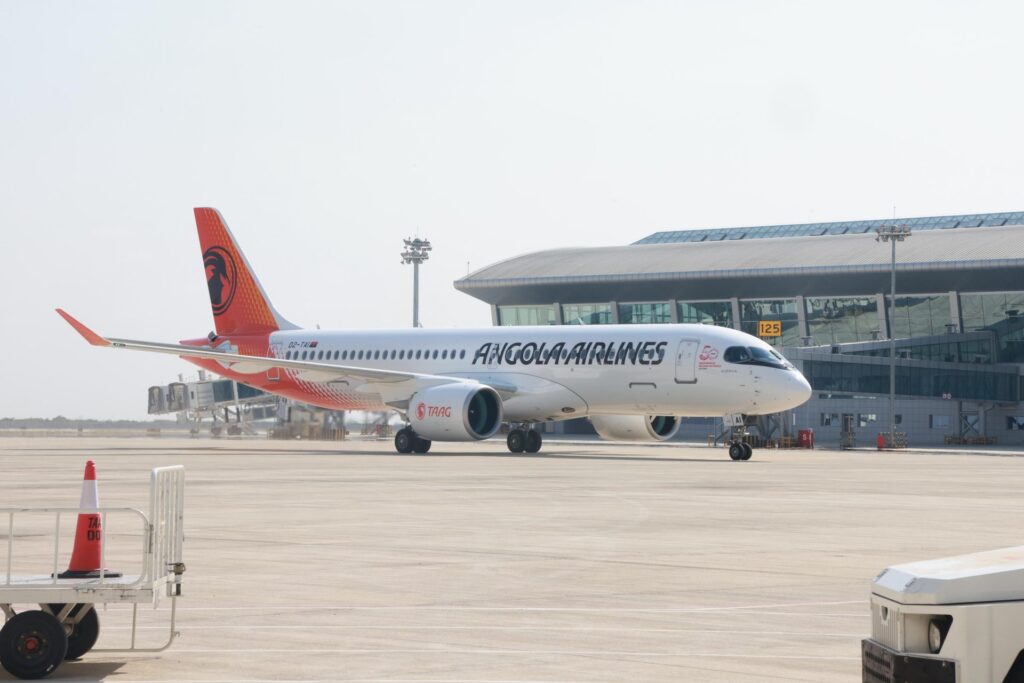TAAG Angola Airlines officially released its third Airbus A220-300 as the airline continues its bold fleet renewal strategy and regional growth plans under its strategic vision for 2024-2029. The aircraft, which registered the D2-TAI, landed at Icolo e Bengo's new Antonio Agostinho Neto International Airport (AIAAN), on a technical stopover in Faro, Portugal, after a trip from Montreal, Canada.
The delivery strengthens TAAG's ambition to become a leading African airline known for its modernity, efficiency and customer-centric services. The A220-300 is recognized worldwide for its fuel efficiency, reduced emissions and exceptional range of regional jets.
“The new era of Taag Angola Airlines”
“We're looking forward to seeing you in the future,” said Nelson Rodriguez de Oliveira, CEO of TAAG. “Incorporating the third Airbus A220-300 represents another step forward in building a modern, competitive airline that can strengthen links between strategic African markets.”
The aircraft, painted in TAAG's new colouring, sits 137 passengers in a comfortable three-class configuration: 12 business class, 35 premium economy, 90 economy. The introduction of the A220 offers a major upgrade to the onboard experience with quiet cabins, larger windows, modern interiors and reduced operating costs.
Strategic expansion of regional footprints
With the growing A220 fleet, TAAG is expanding its southern and central African areas. The aircraft are already deployed on major African routes, including:
Windhook, Namibia
Johannesburg and Cape Town, South Africa
Maputo, Mozambique
Saonme, Saonme, Principe
These routes are essential for regional economic integration and reflect the shift in TAAG's focus from intercontinental services to strategic regional control.
Promote TAAG's Fleet Transformation Strategy
The A220 forms the basis for TAAG's multi-brand fleet strategy, which aims to align aircraft size and performance with a specific market and route demand. Once D2-TAI arrives, TAAG will also integrate plans to streamline operations, increase load factor efficiency and reduce carbon emissions.
This delivery is part of a wider Airbus order as more A220s are expected to join the fleet by 2026. The move supports Angola's broader aviation sector reforms, including airport infrastructure upgrades, including the completion of Antonio Agostinho Neto International Airport, designed to position Luanda as a regional air hub.
New Regional Jet Jets in Africa
Across the continent, the A220 has gained traction as an aircraft of choice to modernize the fleet in Africa's diverse operating environment. Its short runway functionality, combined with performance efficiency at high temperatures and altitudes, is ideal for African situations.
In particular, Air Senegal, Egypt and Nigeria aviation (in pre-launch discussion) evaluated or incorporated the A220 into its fleet strategy, placing the aircraft as a major enabler of aviation growth in the region of Africa.
Sustainability, profitability, performance
The A220-300 has up to 25% lower fuel combustion and CO2 emissions per seat compared to older generation aircraft. For TAAG, this leads to both environmental benefits and improved bottom line performance.
TAAG's 2024–2029 Strategic Plan outlines the goals of regaining profitability, increasing regional market share and modernizing brands. The A220 plays a direct role in providing these goals.


